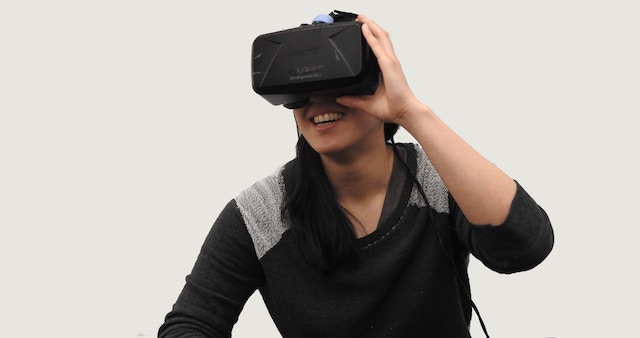Teachers living and working abroad can seriously benefit from the use of technology. Moving to a different country to teach is a challenging process. Whether you speak the local language or not, adapting to a new culture, surroundings and students can be difficult. Utilising technology in this situation, however, can make the adaptation process smoother.
Technology is gradually taking a more prominent role in education. Whether it’s the use of ebooks, online resources or even virtual reality (VR), introducing technology into students’ education can improve engagement and accessibility in a number of ways.
This week, Calum from Loxit Limited will talk you through a few ways technology and VR can improve the experience for teachers working abroad. Read on to find out three ways that technology can support you when living abroad.
Help with the language
 If a teacher is teaching foreign students their own language, or if a teacher isn’t fully lingual with the students’ local language, then technology can help with this in a number of ways.
If a teacher is teaching foreign students their own language, or if a teacher isn’t fully lingual with the students’ local language, then technology can help with this in a number of ways.
First of all, an effective way of learning a new language is through language immersion. This is where the students or teacher would listen and speak the language they are trying to learn all day, every day, usually in the country of origin.
This is easier for the teacher to do as they are in a new environment and are forced to use the new language in order to communicate. For the students, however, this can be more difficult, as they are still in their local environment. Even speaking with each other in their first language can hinder their learning of the new language.
Virtual reality can allow teachers to immerse students into the language they are trying to teach. If an English speaking teacher is teaching Chinese students, VR headsets can be used to take a virtual trip to London, which would otherwise be expensive and difficult to do. These simulations can trick the brain into thinking the experiences are real, improving how the students process information and learn the new language.
There are also numerous translation and language apps which can assist someone who is teaching abroad, such as Google Translate and iTranslate. These can be used quickly and easily if the teacher is struggling to communicate with students.
Collaboration and communication

The use of Virtual Reality in classrooms can improve the collaboration between students and teacher, and even between classes from different sides of the world from one another.
Part of the great things about a teacher moving to a new country to teach students is experiencing a new culture and experience. Quite often, the teacher learns just as much from the students. Technology and VR can enable teachers to return the favour.
 Using Virtual Reality, teachers can design and use collaborative activities to introduce students from different countries to one another. Students can then experience a new language and culture first-hand, just as the teachers working abroad did. This can create a closer bond and understanding between the international teacher and students, as the students can relate to, and respect, the changes the teacher has been willing to make to teach them.
Using Virtual Reality, teachers can design and use collaborative activities to introduce students from different countries to one another. Students can then experience a new language and culture first-hand, just as the teachers working abroad did. This can create a closer bond and understanding between the international teacher and students, as the students can relate to, and respect, the changes the teacher has been willing to make to teach them.
Technology and VR can also help with collaboration inside the classroom, between teacher and student. If there is a language barrier between the two, then technology can use visualisation and images as an alternative to verbal communication.
Read about innovative ways to use technology in the classroom, here.
Reduce homesickness
 Moving abroad to teach is an exciting and eyeopening experience. Teachers get to encounter interesting new people and cultures. However, it can also be a very daunting experience. No matter where they go or how much they’ll enjoy their experience of teaching abroad, it is inevitable that sometimes they will get homesick.
Moving abroad to teach is an exciting and eyeopening experience. Teachers get to encounter interesting new people and cultures. However, it can also be a very daunting experience. No matter where they go or how much they’ll enjoy their experience of teaching abroad, it is inevitable that sometimes they will get homesick.
Years ago, before technology was so efficient and accessible, it would have been difficult keeping in touch with friends and family back home, or even just keeping up to date with the news.
Eventually, if a teacher working abroad is homesick and feels excluded from their home, this can have an adverse effect on personal wellbeing and ultimately, their work. We’re big believers that a happy teacher is a better one. A big part of teaching is the human element rather than educating, and if the teacher is able to form a positive bond and relationship with their students, this can improve the effectiveness of their work.
Nowadays teachers working abroad have better access to wifi, there’s also facetime, skype and numerous ways they can get in touch with home, quickly, easily and cheaply. These things may seem minor nowadays however without them teaching abroad would be much more difficult. A quick catch up with a friend or relative can go a long way in relaxing and reassuring a teacher who is working abroad. This can encourage them to enjoy the experience as well as their work. The students will no doubt benefit from this too.

Callum works for Loxit and has a strong interest in the use of technology in education, Augmented Reality and Virtual Reality. He believes bringing technology into the classroom can enhance the learning experience for both teachers and students. Technology is a major factor in students’ lives, so utilising this can improve engagement and accessibility.



